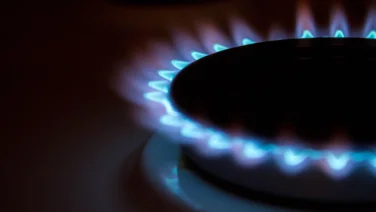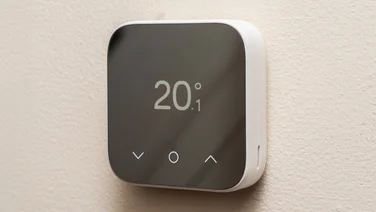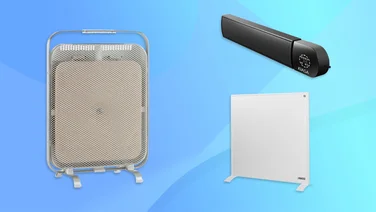To help us provide you with free impartial advice, we may earn a commission if you buy through links on our site. Learn more
- To get a few no-obligation quotes from local installers, use our free tool below.
- Why should I put solar panels on my shed?
- Will I need planning permission for solar panels on my shed?
- How many solar panels does my shed need?
- How many solar panels can my shed support?
- How much do solar panels for sheds cost?

If you’ve been pondering a switch to solar energy for your home, but the upfront cost and hassle have put you off, here’s a cheaper option: install solar panels on your shed. It’s a great way to dip a toe into renewable energy without making a big commitment.
Solar panels on your shed, garage or outhouse can supplement your existing power supply, whether it’s solar or mains electricity. For example, a couple of solar panels can provide all the electricity a garden office might need, or possibly even power a self-contained granny flat.
In this article, we’ll go into detail about the many reasons you might want to explore solar panels for your shed and explain all you need to know before you buy, including costs, installation and panel types.
To get a few no-obligation quotes from local installers, use our free tool below.
Why should I put solar panels on my shed?
There are plenty of good reasons to install panels on your shed, garage or outhouse, however big or small it is:

Avoid panels on your house roof. Not everyone loves the look of solar PV (photovoltaic) panels, and some houses’ roofs simply aren’t suitable for them. For example, your roof may be an unusual shape or fully shaded, you might live in a listed building or conservation area. Even a very small set of solar panels on your shed is a step in the right direction for both your electricity bills and your carbon footprint.
Supplement your existing solar panels. If your main roof-mounted solar PV system doesn’t produce enough electricity to cover all your household needs, then adding a couple of extra panels, whether on the shed or the garage, is a great way to increase your solar capacity.Power your shed with solar panels. Using mains electricity to power a garden office, studio or granny flat is a messy job that involves digging up the garden and running armoured cables from your home. With solar panels, you can run a reliable source of power directly into the building from its own roof.
Charge an electric vehicle. If you add a solar battery to store up the electricity your shed or garage panels produce, the system could provide all the energy you need to run an EV, as well as a heat pump and other green appliances.
Storing emergency power. If your area’s grid experiences regular outages, a solar battery and a set of solar panels on the shed roof could be a lifesaver.
READ NEXT: Best solar storage batteries
Will I need planning permission for solar panels on my shed?
You don’t need planning permission for solar panels on your shed unless you live in a listed building or a conservation area. Even if the solar panels aren’t going on the building itself, you will need local authority consent to carry out any renovation work, including permanent solar installations on the grounds of your home. In that case, your best bet may be a portable DIY solar panel, or a few.
When installing solar panels on any building on your property, similar rules apply as when you’re installing them on your home. Position the panels to maximise their exposure to sunlight, and get enough panels to cover your energy needs. For most projects, it pays to have your panels installed by a professional who can help you get the best out of your switch to solar.
READ NEXT: Solar panels grants
How many solar panels does my shed need?
The number of solar panels you’ll need for your shed project depends on the energy needs you want to meet. The energy usage of a fully kitted-out granny flat is about the same as a one-bedroom flat with a single occupant, so three standard 350W (watt) solar panels should cover it – for comparison, a 3-bedroom home would need around 10 standard panels.
READ NEXT: How many solar panels do I need?
If you’ll be using the shed as a garden office during the day, with lighting, computer equipment and a heater, then one or two standard 350W panels should cover its daily usage. If you just want to run a laptop, a fridge and a USB charger or two, then a portable, DIY 100W solar panel may be all you need. If and when your energy usage grows, it will be easy enough to buy another panel or two.Obviously, electric vehicles have much higher energy needs. You could turn your garage into an EV charging port, but you’d need a full-size array of at least six solar panels, plus a solar storage battery capable of storing at least 7kW.
Here’s a brief summary of the number of panels you’re likely to need for different uses:
- Create an EV charging port: Six 350W solar panels, plus solar battery
- Power a self-contained granny flat: Three 350W panels
- Power a laundry/utility room: Two 350W panels
- Power a garden office: One or two 350W panels
- Power a laptop, fridge and phone charger: One 100W panel
READ NEXT: Best solar panels UK
How many solar panels can my shed support?
Standard rigid 350W panels weigh around 18-20kg and take up 2 square metres each. For roof installation, they will need to be mounted on a frame, and that adds more weight. A sizeable, newly-constructed garden office may be able to support this weight just fine, but smaller and older sheds – particularly wooden sheds – would struggle.
Luckily for less-than-robust sheds and outbuildings, you can now buy a whole range of flexible monocrystalline panels. These are made from sheets of silicon or cadmium and are ideal for less sturdy roofs or irregular surfaces such as a shed or campervan.
Flexible panels are also cheaper than rigid solar panels and easy to buy off-the-shelf (or, indeed, from Amazon) for DIY installation. However, they are less efficient: around 15% efficiency, compared with 20% for most rigid residential panels.

A professional solar installer would be able to assess your shed’s roof structure and advise on the size, type and number of solar panels it can shoulder.
You can give your roof a break – and save on installation costs – by simply propping the panels up against the side of the shed, but you’ll need to ensure that they’re facing south and angled correctly to get enough sun. As we explain in our article on the best direction for solar panels, solar panels work at their maximum potential when they’re pitched at 35 to 40 degrees from horizontal.
READ NEXT: Solar roof tiles
How much do solar panels for sheds cost?
Even professional solar panel installations tend to cost much less for sheds than for house roofs because scaffolding is unlikely to be needed. If you need three standard solar panels to power your garden office, you’re likely to be looking at around £1,000 for the panels, plus up to £200 for installation. But, as mentioned above, shed solar panels can come in all shapes and sizes. Here’s a rough guide to costs for different-sized projects:
Power a garden office (pro installation): £1,200
The cost of standard solar panels has tumbled in recent years, and you can now buy high-efficiency 420-440W SunPower Maxeon 6 AC panels (2 x 1 metre) for just £350 including VAT. To fully power a garden office you’d need up to three of these panels, plus around £100-£200 for installation. In our round-up of the best solar panels you can buy in the UK, we awarded this panel first place and named it the best solar panel for small roofs.
Power a garden office (DIY): £300-£700
If you would rather set up a solar system for your garden office or studio by yourself, check out the DIY solar panel kits from Plug-In Solar. The Plug-In Solar 405W DIY Solar Power Kit (from £516, including VAT) contains one industry-certified solar panel plus a roof mounting kit and all the electrical devices and cabling you’ll need. However, you will have to supply earthing equipment and be connected to the national grid.
Off-grid solar shed (DIY, basic): £108
That low-maintenance laptop-and-fridge setup can be powered entirely by one DIY solar panel from Amazon. The Eco-Worthy 120W Solar Panel weighs less than 10kg and costs just £120 from Amazon at the time of writing. You could fix it to your shed roof for maximum sunlight, or lean it up against the side and move it to capture the sun as it changes during the day. Alternatively, if you’d prefer a flexible panel to drape across the roof of your shed then Renology’s 100W Flexible Monocrystalline Solar Panel will do the job nicely for just £108.

Off-grid solar studio (DIY, the works): £1,070
At the top of Renology’s range is its 800W Monocrystalline Solar Premium Kit (£1,070 at the time of writing), which can provide all the electricity you need for an off-grid garden studio or mobile home. It even includes a battery for storing electricity to use after the sun goes down.






